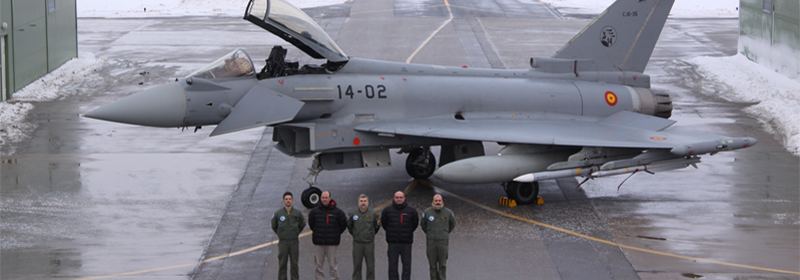- The EuroDASS consortium, which comprises Leonardo, Elettronica, Indra and Hensoldt, will spend 18 months exploring future upgrades for the Typhoon’s world-class electronic warfare system
- The Praetorian Defensive Aids Sub System (DASS) is highly-regarded by users and has kept Typhoon crews safe throughout peace-keeping operations in Libya and Syria
- The study will support the ability of the Typhoon’s defences to keep pace with new technology and techniques employed by rapidly-develolping threat systems

Leonardo, on behalf of the EuroDASS consortium, has received a contract from BAE Systems that will see the consortium explore the future of the Eurofighter Typhoon’s ‘Praetorian’ Defensive Aids Sub System (DASS). The ‘Praetorian Long Term Evolution (LTE)’ study will lay the groundwork for future development work which will ensure that the Typhoon’s Electronic Warfare system will remain one of the most advanced in the world for decades to come. The contract is a key part of the wider Eurofighter Typhoon LTE study, which aims to identify a suite of technology enhancements for the Typhoon’s weapons system infrastructure and propulsion to provide a clear road map for the future of the platform.
The Praetorian DASS is provided by the EuroDASS consortium, which comprises Leonardo, Elettronica, Indra and Hensoldt. It equips the Typhoon with advanced protection from threats including Infra-Red (IR or heat-seeking) and radar-guided missiles. The system is well-regarded by users and has been battle-tested on peace-keeping operations in Libya and Syria.
The LTE project will enable Typhoon to be a survivable and effective combat aircraft for several decades against a background of accelerating technology development by potential adversaries. The Praetorian Defensive Aids Sub System (DASS) is the Typhoon’s protection system, which integrates sensors and jamming equipment to provide exceptional situational awareness and a digital stealth capability for the Typhoon, achieved through advanced electronic deception techniques. The Praetorian LTE study will evaluate potential future DASS requirements, enabling Typhoon to cope faster, easier and more affordably with new threats as they arise in the future.
The study is expected to deliver options for long-term technical solutions and enablers which will sustain the growth path of the platform in the future. Options are likely to cover both improved architecture, which new capabilities can be added to in a more agile and lower-cost fashion, and improvements to the the exploitation and fusion of sensors to support the multi-role flexibility of the platform. A number of options will be explored and presented to the Eurofighter partner nations to support informed decision making.